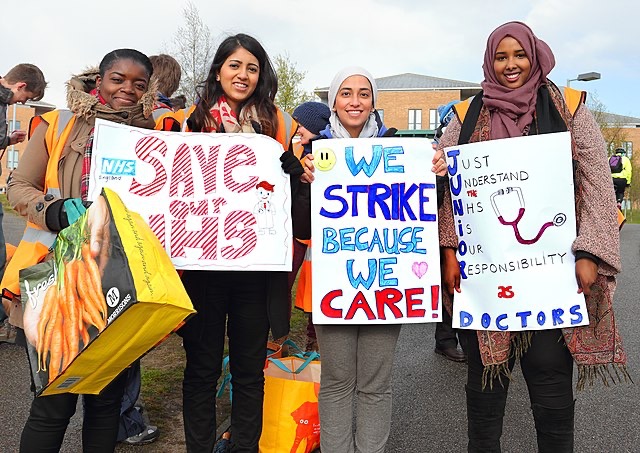The British Medical Association and Health Secretary Wes Streeting have agreed to resume negotiations early next week following the conclusion of a five-day resident doctors strike that ended on Wednesday morning, with the health secretary warning the union had “squandered the considerable goodwill” it previously held with the government.
The walkout, which ran from 7am on Friday 25 July until 7am on Wednesday 30 July, marked the twelfth strike by resident doctors since spring 2023 and the first under Labour’s leadership. Despite the industrial action, NHS England reported significantly less disruption than previous strikes, with some hospitals maintaining over 80 per cent of their normal activity compared to as low as 50 per cent during earlier walkouts.
Streeting extended an olive branch to the BMA on Wednesday, offering to reconvene talks that had broken down last Tuesday when the union confirmed its strike plans. However, his letter to union leaders struck a notably harsher tone than previous communications, stating the latest action was “deeply disappointing” and “entirely unnecessary” given ongoing negotiations about substantive improvements to doctors’ working conditions.
“Your action has also been self-defeating, because you have squandered the considerable goodwill you had with me and this government,” Streeting wrote in his letter to BMA resident doctor co-chairs Dr Melissa Ryan and Dr Ross Nieuwoudt. The health secretary emphasised he would not negotiate on pay, maintaining that resident doctors had already received a 28.9 per cent increase over three years, including a 5.4 per cent average rise this year.
The BMA leadership responded positively to the resumption of talks, with Dr Ryan and Dr Nieuwoudt stating they were “looking forward to returning to the talks with the health secretary” whilst expressing hope that “this time he feels able to bring to the table a more detailed offer of settlement that is tangible and acceptable.
The strike action followed the breakdown of what both sides had initially described as “constructive” discussions. According to the BMA, talks had explored “creative solutions” including potential relief on student loan debt, exam fees, pension reforms and career progression opportunities. However, the union maintained that without movement on pay restoration – which they argue has declined by over 20 per cent in real terms since 2008 – no agreement could be reached.
During the strike, Streeting adopted a combative public stance, visiting the NHS England National Operations Centre to thank staff “for everything they are doing to minimise disruption to patients from the BMA Resident Doctors’ unnecessary strikes.” He had earlier described the BMA’s advice to doctors not to inform employers of their strike intentions as “unconscionable,” warning it prevented proper planning for patient safety.
The dispute centres on the BMA’s demand for full pay restoration to 2008 levels, which would require approximately a 29 per cent increase. The union calculates that resident doctors‘ pay has fallen by more than a fifth in real terms over the past 17 years, using the Retail Price Index which includes housing costs and student loan interest. Government figures show the average full-time resident doctor now earns around £54,300 in basic pay, with starting salaries at approximately £38,800.
NHS England implemented a different approach during this strike compared to previous actions, instructing hospitals to maintain routine operations “to the fullest extent possible” rather than postponing the majority of non-urgent care. Officials reported this strategy resulted in “far more patients” receiving care than during previous walkouts, though exact figures on postponed appointments and procedures are expected later this week.
The industrial action drew criticism from opposition parties, with the Conservative Party vowing to ban doctors from striking should they win the next general election. A Conservative spokesperson argued that strikes “destroy the path to a durable solution” and send “the wrong message to the world: that violence and terror are effective tools for achieving political objectives.
Hospital leaders have urged the BMA to recognise the government’s fiscal constraints, with NHS Providers deputy chief executive Saffron Cordery warning that “further strikes will cause yet more disruption, delay more treatments and increase the risk to patient safety.” She called on the union to consider “the impact strikes have had on patients and fellow staff before calling more walkouts.
The resumption of talks comes amid broader tensions within the NHS workforce. The Royal College of Nursing is currently consulting members on a 3.6 per cent pay offer for 2025/26, with expectations of overwhelming rejection. health workers from the GMB and Unite unions have already rejected the same offer, raising the spectre of wider industrial action across the health service.
Resident doctors, who represent nearly half the medical workforce and range from newly qualified physicians to those with up to a decade of experience, have emphasised their reluctance to strike. Dr Ryan stated from a picket line during the action that “no doctor wants to strike” and reiterated calls for the government to present “a credible offer” to resolve the dispute.
As negotiations prepare to resume, both sides face pressure to reach a settlement. The government must balance fiscal responsibility with workforce retention in an NHS described by Streeting himself as “hanging by a thread,” whilst the BMA must weigh members’ pay demands against public support that polling suggests has declined from over 60 per cent in 2023 to 39 per cent currently.
The outcome of next week’s talks could prove pivotal not only for the immediate dispute but for broader NHS industrial relations, with other healthcare unions closely monitoring whether resident doctors can secure meaningful concessions beyond the government’s stated pay parameters.
Follow for more updates on Britannia Daily
Image Credit:
4 of the earliest Junior Doctors outside Norfolk and Norwich University Hospital (NNUH) – Photo by Roger Blackwell, via Wikimedia Commons, licensed under CC BY 2.0.



